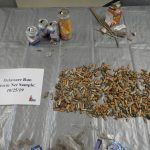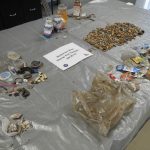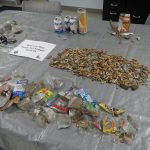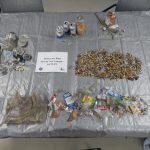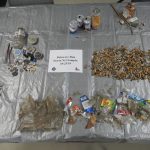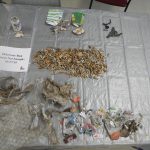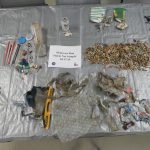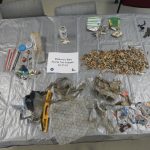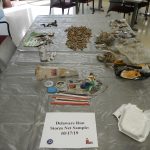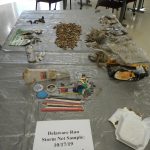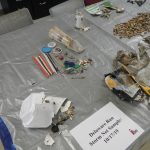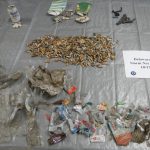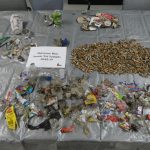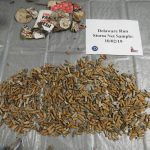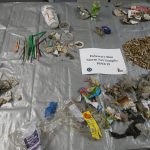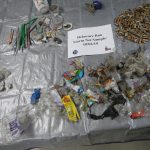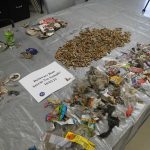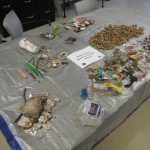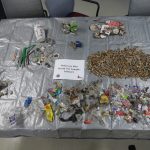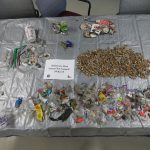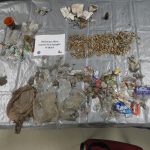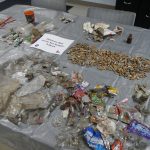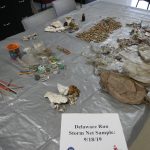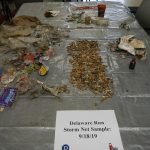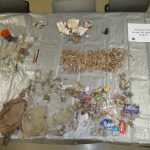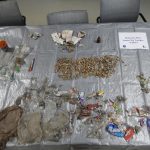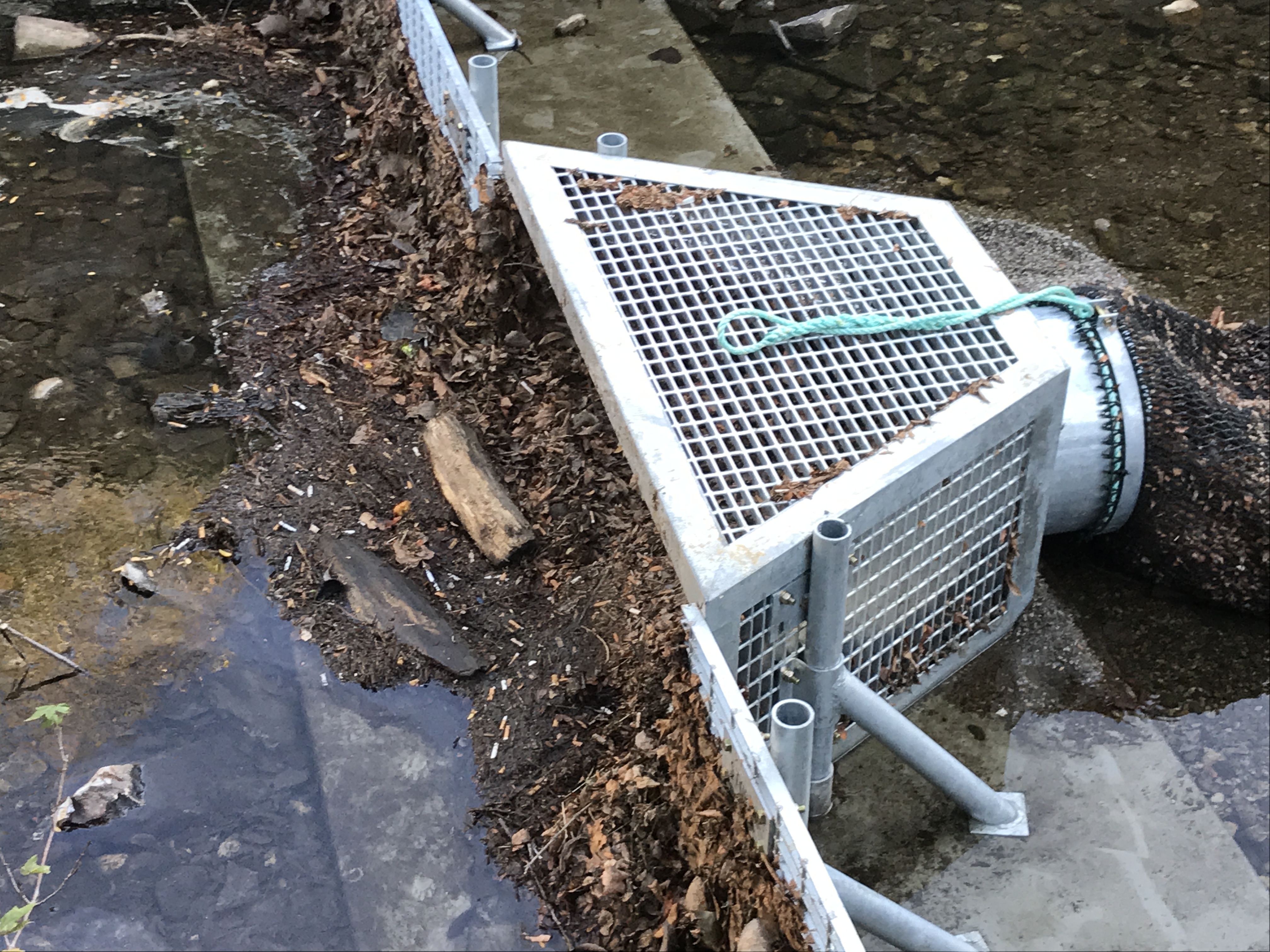
OWU and City of Delaware Storm Drain Net Collaboration (OWU E&S Blog, Feb. 1, 2019)
Students and faculty have been working a project to implement a storm drain net in the Delaware Run on campus. The purpose of the net will be to remove trash and green waste/debris from the Delaware Run behind Merrick on campus.
Net Placed in Delaware Run; City, OWU Seek to Improve Waterway (Delaware Gazette, Sept. 10, 2019)
Ohio Wesleyan University, Delaware partner on student’s stream study project (This Week Community News, Sept. 13, 2019)
Delaware Run Storm Drain Net Installed and Catching Crap! (OWU E&S Blog, Sept. 25, 2019)
Update after the net was installed in early September 2019. Includes video.
Environmental Impact: Ohio Wesleyan Student Earns Litter Prevention Award for Storm Drain Net (OWU Press Release, December 6, 2019)
Fall 2019 Debris Gallery: Below is a gallery of sorted debris collected in September and October of 2019. The net is unloaded and allowed to dry (for weighing the organic and non-organic material) then sorted. The organic material is returned to Delaware Run. There have been almost no fish or insects or other lifeforms in the debris collections.

